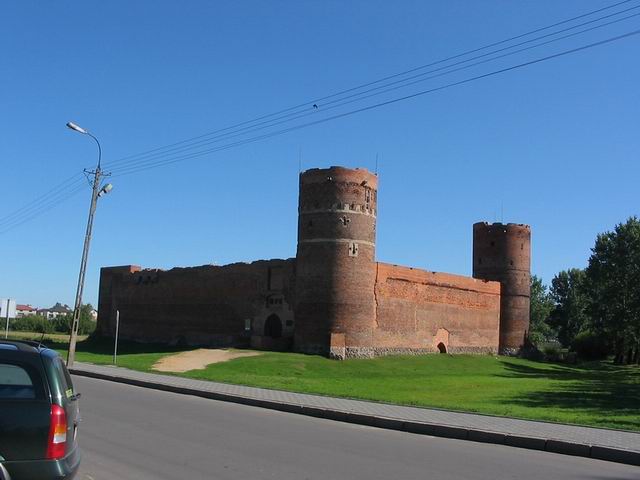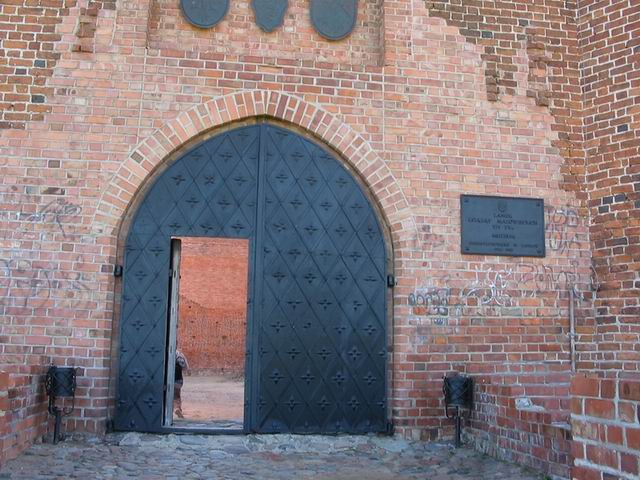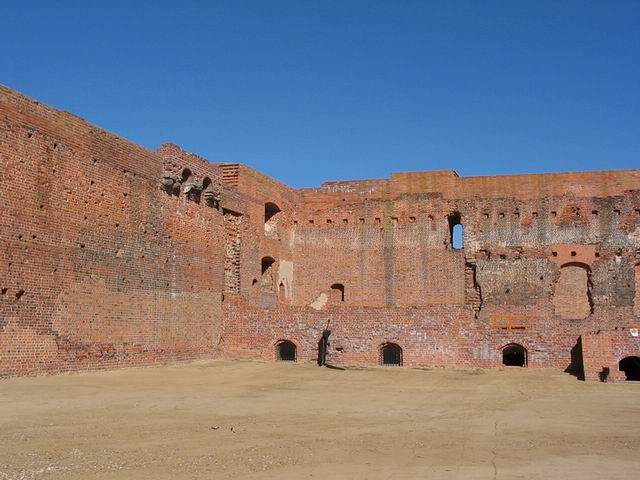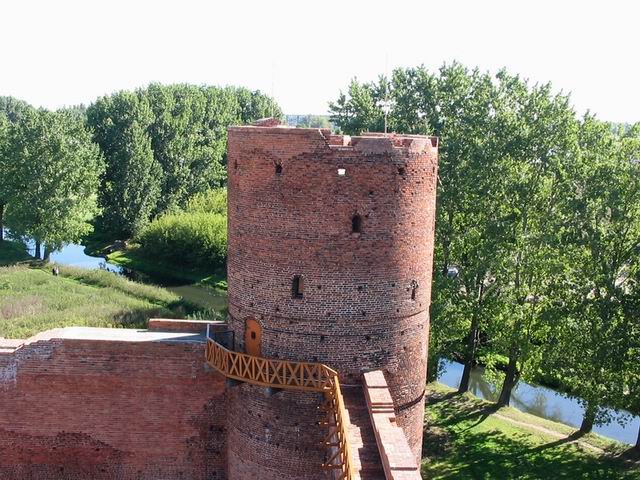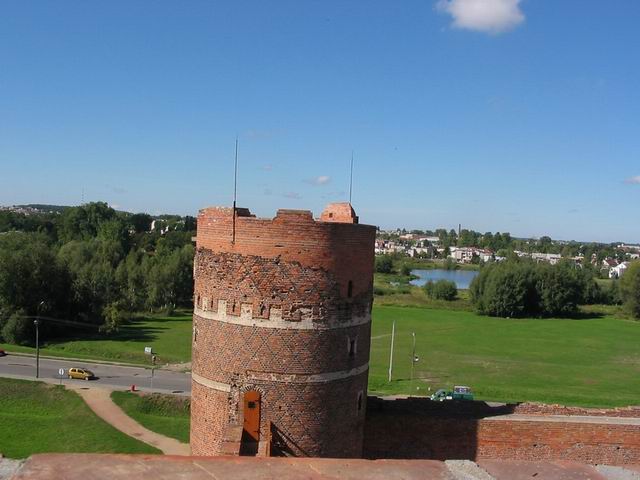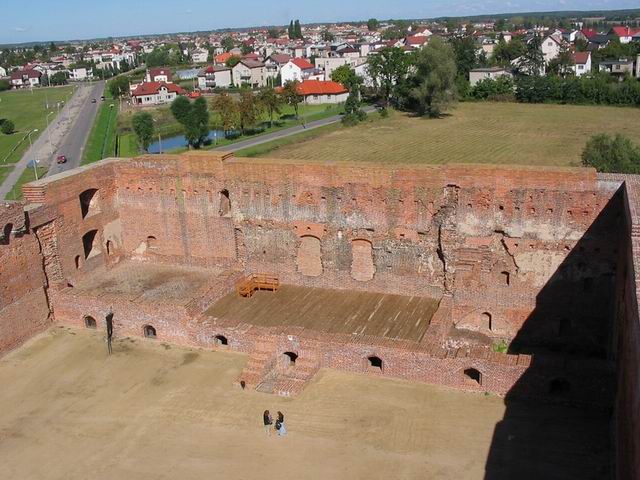Mazowieckie
Interesting facts about the history of the castle and town
3000 BC
Pottery and stone tools found near Farska Góra, dating back to 3000 BC, are the first traces of human presence in the area of present-day Ciechanów .
VII century
An uninterrupted sequence of settlements in the vicinity of present-day Ciechanów began in the 7th century. This is confirmed by archaeological research carried out on Farska Góra. As late as in the 16th century, this place was referred to as mons antiqui castri, i.e. an old castle hill.
X century
In the 10th century a tribal kingdom was founded in Ciechanów, whose territory was separated by the forests near Żuromin in the west, the borderland of Prussia in the north, the Kurpiowska Forest in the east, and the forests in the bifurcation of the Vistula, Wkra and Narew rivers in the south. Its centre was probably located in Ciechanów.
1065
The first mention of Ciechanów dates 1065. This document is a grant Bolesław Śmiały to the Order of Saint Benedict Mogilno in Wielkopolska (so-called Mogilno falsification). The name of the castle is recorded there as Cechonow.
1180
In 1180 Ciechanów was ravaged during a raid by the Pomeranians.
1st half of the XIII century
In the first half of the 13th century Ciechanów became a castellany. The first castellans known by name were Pomścibór (1240) and Racibor (1254).
1244
In 1244, near Ciechanów, the Masovian knights defeated Prussian troops ravaging Masovia in battle.
1246
In 1246 a retaliatory Prussian expedition fell on the lands around Ciechanów.
1254
In a document 1254, in which Duke Siemowit I granted the village of Proszkowo to Bishop Andrzej of Płock, the castellan of Ciechanów Racibor (Rethiborius Castellanus de Techonow) appears by name.
1260
In 1260 Ciechanów was ravaged by the Lithuanians, who came to the area under the leadership of Mindaugas.
1267
In 1267 Ciechanów was again destroyed during a joint looting expedition of the Lithuanians, Prussians and Yotvingians.
1337
In 1337 Ciechanów was destroyed after an invasion of Lithuanians led by Algirdas. During the retreat of the attackers, a battle took place near Ciechanów, which ended with the victory of the Mazovians.
XIV century
Ciechanów was granted city rights in the first half of the 14th century by Siemowit III. According to church tradition, it was already in 1266, and this was accompanied by the foundation of a church dedicated to the Blessed Virgin Mary by Conrad II.
1349
Ciechanów became the capital of a separate principality.
1355
Around 1355 Siemowit III started to build a castle in Ciechanów. The work of erecting the fortress lasted until 1370.
1420-1429
In the years 1420-1429, the castle in Ciechanów was rebuilt. The mason was Niklos, known documents.
1465
According to the chronicle of Jan Długosz, in 1465 a battle between Polish knights and the Teutonic Knights took place near Ciechanów.
1476
In 1476 Ciechanów was burnt down by a great fire.
1489
1526
In 1526, the dynasty of the Mazovian Piasts expired. Thanks to that Ciechanów enlarged the territory of the Crown.
1538
In 1538, Sigismund I the Old confirmed the privileges of Ciechanów.
1548
In 1548, after the death of Sigismund I the Old, Queen Bona received the castle in Ciechanów.
1564
The inspection carried out in 1564 in Ciechanów tells us that the town was surrounded by a rampart, had four hundred and four houses and about two and a half thousand inhabitants. Some of the streets were paved. There were four churches, one monastery and two smaller churches.
1576
In 1576, Stefan Batory confirmed the privileges of Ciechanów.
1602
In 1602 the population of Ciechanow was decimated due to a spreading plague.
1628
In 1628, Zygmunt III Waza confirmed the privileges of Ciechanów.
1657
In 1657 Ciechanów was destroyed and plundered by the Swedish army of Charles X Gustav.
1708
In 1708 Ciechanów was destroyed by the Swedish troops of Charles XII.
1726
In 1726, August II the Strong confirmed the privileges of Ciechanów.
1794
In 1794 for thirteen years Ciechanów became part of the Prussian state.
26 December 1806
On 26 December 1806 Ciechanów was recaptured Prussian hands by the IV Corps of Napoleon's Army.
1807
In 1807 Ciechanów became part of the Duchy of Warsaw.
1831
In 1831, during the November Uprising, Ciechanów was pacified by the Cossack troops of Colonel Borisov.
1864
In 1864 a steam brewery was opened in Ciechanów, which became the first major industrial plant.
1877
In 1877 Ciechanów received a railway station on the Warsaw-Gdansk line.
1882
In 1882, the Ciechanów sugar factory opened and became the largest industrial plant in the town.
1914-1915
Between 10 September 1914 and 16 July 1915 there was fighting for the conquest of Ciechanów, as a result of which the city was massively destroyed, there was famine and a cholera epidemic.
1918
In 1918, the first high school was established in Ciechanow.
26 October 1939
On the 26th of October 1939 by a German decree the Ciechanów District was created, which included the districts of Ciechanów, Działdowski, Makowski, Mława, Płocki, Pułtuski, Płoński, Ostrołęcki and Sierpc.
16 January 1945
On 16 January 1945 Ciechanów was liberated Nazi occupation.
1975
In 1975 Ciechanów became a voivodeship town.
1998
In 1998 Ciechanów ceased to be a voivodeship town.
Wersja polska
Version française















